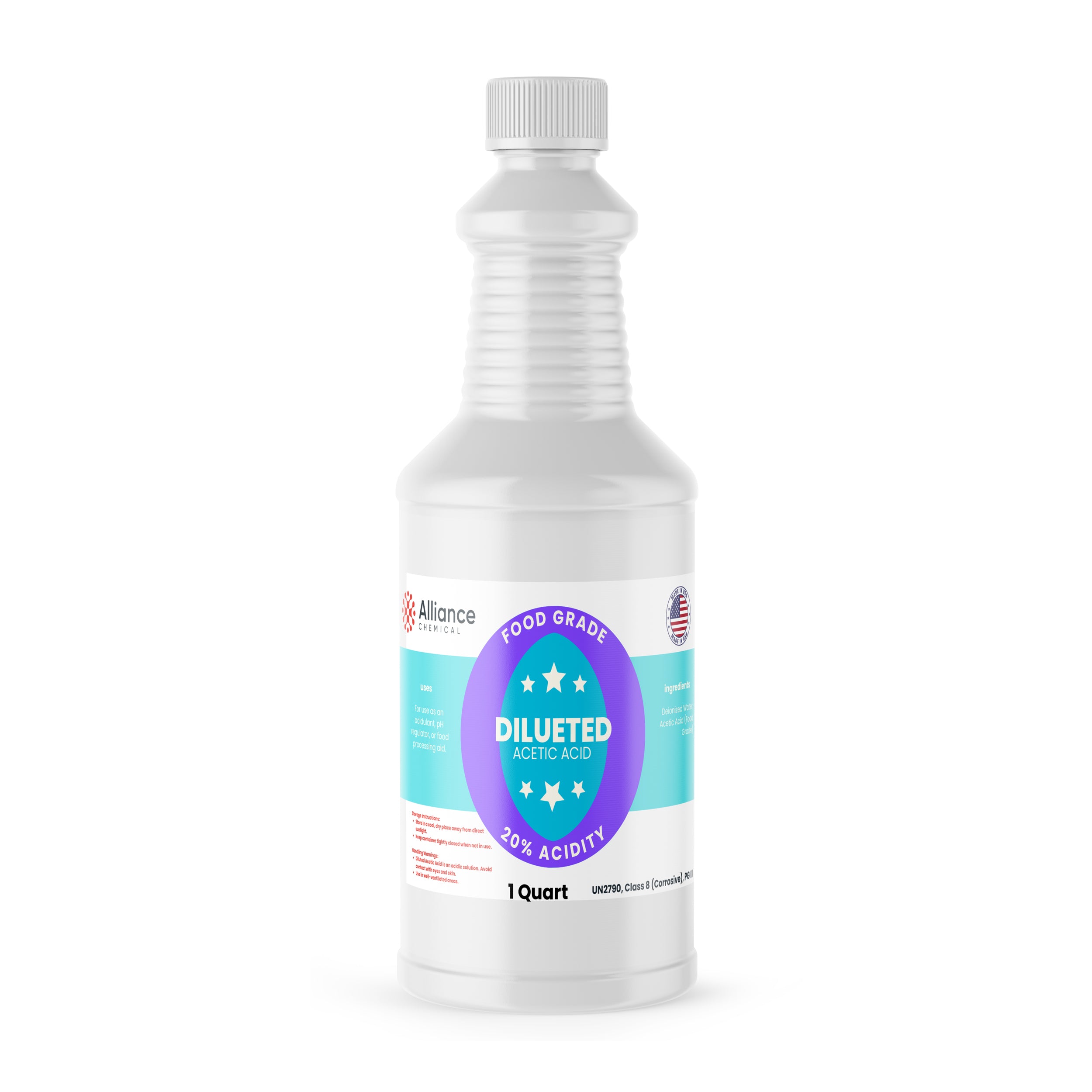Ask a question
Product Overview
Alliance Chemical provides high-purity 20% Diluted Acetic Acid Food Grade, a solution specifically manufactured for the food processing industry. Also known as Ethanoic Acid or Vinegar Acid, this clear, colorless liquid is essential for applications requiring precise acidity control, flavor enhancement, and preservation. Our 20% solution offers a stable, consistent concentration (19-21 wt%) derived from premium acetic acid (C₂H₄O₂), ensuring reliable performance in manufacturing workflows.
This product is strictly controlled to meet Food Grade specifications, with rigorous testing for heavy metals and trace impurities via ICP-OES and IC methods. It serves as a critical processing aid for pH neutralization, acidification in dairy and sauce production, and as a raw material for various food formulations. Available in sizes ranging from 1-gallon bottles to bulk 330-gallon totes, it supports both pilot-scale testing and full-scale industrial production.
Key Properties
- Chemical Name: Acetic Acid Solution (20%)
- Synonyms: Ethanoic Acid, Vinegar Acid
- Appearance: Clear, colorless liquid
- Odor: Pungent, vinegar-like
- Chemical Formula: C₂H₄O₂
- Molecular Weight: 60.05 g/mol
- Assay (Acetic Acid): 19–21% (Typical 20%)
- Specific Gravity (20°C): 1.04–1.08 (Typical 1.06)
- Density: 1.05 g/mL
- Boiling Point: Approx. 100°C
- Solubility: Completely miscible in water
- Heavy Metal (Pb): ≤0.1 ppm
- Residue After Ignition: ≤0.05%
Common Applications
- Food Preservation & Pickling: Acts as a primary preservative to maintain shelf stability in vegetable pickling, dressings, and sauces by creating an environment unfavorable to spoilage.
- Industrial pH Adjustment: Used to lower pH in food processing water and ingredient streams to meet specific acidity requirements for safety and texture.
- Flavor Modification: Provides a clean, sharp acidic profile for marinades, vinaigrettes, and condiments without introducing unwanted chemical byproducts.
- Equipment Cleaning: Effective as a food-safe cleaning agent for removing mineral deposits and scaling in processing equipment (CIP systems).
- Manufacturing Processing: Utilized in the coagulation of casein in dairy processing and as a reaction medium in food-grade chemical synthesis.
Safety Precautions
While 20% Acetic Acid is less concentrated than glacial forms, it is still corrosive and must be handled with care. Wear appropriate Personal Protective Equipment (PPE), including chemical-resistant gloves, splash goggles, and protective clothing. Ensure adequate ventilation during handling to avoid inhaling vapors.
Store in a cool, dry, well-ventilated area away from strong oxidizers and bases. Keep containers tightly closed when not in use to maintain assay integrity. In the event of skin or eye contact, rinse immediately with copious amounts of water for at least 15 minutes and consult the Safety Data Sheet (SDS) for detailed first aid measures.
Benefits
Strict Food Grade Compliance – Manufactured to meet rigorous specifications for safety in food applications.
Consistent Concentration – Tightly controlled 19-21% assay ensures reproducible results in formulation and dosing.
Verified Purity – Low impurity profile confirmed by ICP-OES/MS testing for heavy metals and anions.
Versatile Packaging – Available in quarts, gallons, drums, and totes to suit any production volume.
Related Products
| Property | Value |
|---|
Z3D-P7W-K8R
$23.00
Unit price
Compare Products
| Price |
|---|
| SKU |
| Rating |
| Discount |
| Vendor |
| Tags |
| Weight |
| Stock |
| Short Description |

















